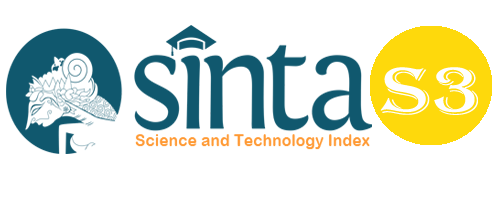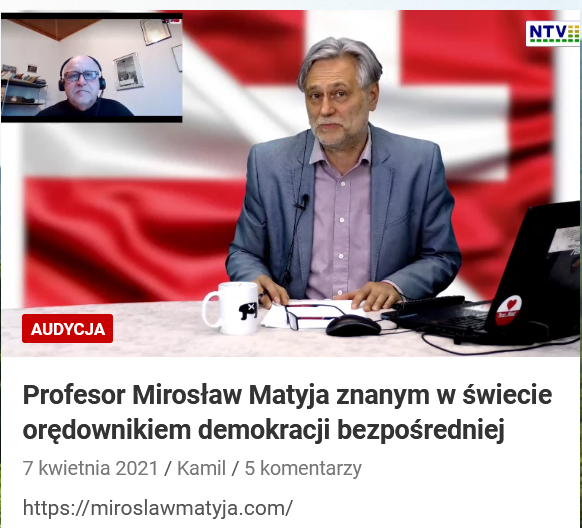Implementation of Media Richness Theory in the Use of Microsoft Teams Applications
Abstract
This journal article reviews the literature on the implementation of communication theory in the use of Microsoft Teams applications which aims to see the user's perspective in communicating through Microsoft's flagship application, Microsoft Teams. This study aims to determine the implementation of media richness theory in the use of Microsoft Teams applications. Which includes the experience of informants when using the Microsoft Teams application in their daily lives. This study uses qualitative research methods, using the theory of media richness which looks at the stages or the highest level of communication, namely directly (face-to-face). Data collection techniques using observation, interviews and documentation. Based on researcher interviews with informants, the Microsoft Teams application can be a media solution or media support for work productivity and education, especially in terms of interaction and communication with other users. However, Microsoft Teams also has some drawbacks that make this video conferencing application not equivalent to face-to-face communication.
Keywords
Full Text:
PDFReferences
Almpanis, T., & Joseph-Richard, P. (2022). Lecturing from home: Exploring academics' experiences of remote teaching during a pandemic. International Journal of Educational Research Open, 3, 100133. https://doi.org/10.1016/j.ijedro.2022.100133
Andrea Lidwina. (2021). Zoom, Aplikasi Bisnis Paling Banyak Diunduh 2020. Databoks.Katadata.Co.Id. https://databoks.katadata.co.id/datapublish/2021/01/29/zoom-aplikasi-bisnis-paling-banyak-diunduh-2020
Bariah, SK (2019). Rancangan pengembangan instrumen penilaian pembelajaran berbasis daring. Jurnal Petik, 5(1), 31–47. https://doi.org/10.31980/jpetik.v5i1.445
Barry, DM, Kanematsu, H., Ogawa, N., & McGrath, P. (2021). Technologies for teaching during a pandemic. Procedia Computer Science, 192, 1583–1590. https://doi.org/10.1016/j.procs.2021.08.162
Billingsley, L. (2020). Using video conferencing applications to share the death experience during the COVID-19 pandemic. Journal of Radiology Nursing, 39(4), 275–277. https://doi.org/10.1016/j.jradnu.2020.08.001
Bui, T.-H., Luong, D.-H., Nguyen, X.-A., Nguyen, H.-L., & Ngo, T.-T. (2020). Impact of female students' perceptions on behavioral intention to use video conferencing tools in COVID-19: Data of Vietnam. Data in Brief, 32, 106142. https://doi.org/10.1016/j.dib.2020.106142
Camilleri, MA, & Camilleri, A. (2022). Remote learning via video conferencing technologies: Implications for research and practice. Technology in Society, 101881. https://doi.org/10.1016/j.techsoc.2022.101881
Chan, M., & Li, X. (2020). Smartphones and psychological well-being in China: Examining direct and indirect relationships through social support and relationship satisfaction. Telematics and Informatics, 54, 101469. https://doi.org/10.1016/j.tele.2020.101469
Daft, RL, and Lengel, RH (1984) “Information Richness: A New Approach to Managerial Behavior and Organizational Design,” in Research in Organizational Behavior, LL Cummings and BM Staw (eds.), JAI Press, Homewood, IL,, pp. 191-233.
El-Shinnawy and Markus. (1997). The poverty of media richness theory: explaining people's choice of electronic mail vs. voice mail. Int. J. Human-Computer Studies, 46, 443-467.
Ellis, R., Goodacre, T., Mortensen, N., Oeppen, RS, & Brennan, PA (2022). The application of Human Factors at Hybrid meetings: facilitating productivity and inclusivity. British Journal of Oral and Maxillofacial Surgery. https://doi.org/10.1016/j.bjoms.2021.12.055
Favale, T., Soro, F., Trevisan, M., Drago, I., & Mellia, M. (2020). Campus traffic and e-Learning during COVID-19 pandemic. Computer Networks, 176, 107290. https://doi.org/10.1016/j.comnet.2020.107290
Fujs, D., Vrhovec, S., Žvanut, B., & Vavpotič, D. (2022). Improving the efficiency of remote conference tool use for distance learning in higher education: A kano based approach. Computers & Education, 104448. https://doi.org/10.1016/j.compedu.2022.104448
Humas Sekretariat Kabinet RI. (2020). Penggunaan Teknologi Video Conference Dalam Penyelenggaraan Sidang Kabinet/Rapat Terbatas. Setkab.Go.Id. https://setkab.go.id/penggunaan-teknologi-video-conference-dalam-penyelenggaraan-sidang-kabinet-rapat-terbatas/
Jääskä, E., & Aaltonen, K. (2022). Teachers' experiences of using game-based learning methods in project management higher education. Project Leadership and Society, 100041. https://doi.org/10.1016/j.plas.2022.100041
Kapriadi, PR, & Irwansyah, I. (2020). Implementasi Computer Mediated Communication dalam Digital Staffing Berbasis Mobile Application dan Online Platform di Perusahaan Startup. KAREBA: Jurnal Ilmu Komunikasi, 382-399.
Liu, S.-H., Liao, H.-L., & Pratt, JA (2009). Impact of media richness and flow on e-learning technology acceptance. Computers & Education, 52(3), 599–607. https://doi.org/10.1016/j.compedu.2008.11.002
Lieux, M., Sabottke, C., Schachner, ER, Pirtle, C., Danrad, R., & Spieler, B. (2021). Online conferencing software in radiology: Recent trends and utility. Clinical Imaging, 76, 116–122. https://doi.org/10.1016/j.clinimag.2021.02.008
Lukacik, E.-R., Bourdage, JS, & Roulin, N. (2022). Into the void: A conceptual model and research agenda for the design and use of asynchronous video interviews. Human Resource Management Review, 32(1), 100789. https://doi.org/10.1016/j.hrmr.2020.100789
Martin, F., Sun, T., Westine, C., & Ritzhaupt, A. (2022). Examining research on the impact of distance and online learning: A second-order meta-analysis study. Educational Research Review, 100438. https://doi.org/10.1016/j.edurev.2022.100438
Melgaard, J., Monir, R., Lasrado, LA, & Fagerstrøm, A. (2022). Academic Procrastination and Online Learning During the COVID-19 Pandemic. Procedia Computer Science, 196, 117–124. https://doi.org/10.1016/j.procs.2021.11.080
Melotronic. (2018). Mengapa Perusahaan Wajib Mempertimbangkan Penggunaan Video Conference. Melotronic.Com. https://melotronic.com/mengapa-perusahaan-wajib-mempertimbangkan-penggunaan-video-conference/
Moleong, LJ (2018). Metodologi Penelitian Kualitatif (Edisi Revisi). PT Remaja Rosdakarya, 330.
Oeppen, RS, Shaw, G., & Brennan, PA (2020). Human factors recognition at virtual meetings and video conferencing: how to get the best performance from yourself and others. British Journal of Oral and Maxillofacial Surgery, 58(6), 643–646. https://doi.org/10.1016/j.bjoms.2020.04.046
Pal, D., & Vanijja, V. (2020). Perceived usability evaluation of Microsoft Teams as an online learning platform during COVID-19 using system usability scale and technology acceptance model in India. Children and Youth Services Review, 119, 105535. https://doi.org/10.1016/j.childyouth.2020.105535
Purwono, FH, Ulya, AU, Purnasari, N., & Juniatmoko, R. (2019).Metodologi Penelitian (Kuantitatif, Kualitatif dan Mix Method). GUEPEDIA.
Penrod, D., Shaw, T., Nash, J., Dierkes, M., & Collins, S. (2022). Community college students' perspectives on online learning during COVID-19 and factors related to success. Teaching and Learning in Nursing. https://doi.org/10.1016/j.teln.2022.01.012
Szopiński, T., & Bachnik, K. (2022). Student evaluation of online learning during the COVID-19 pandemic. Technological Forecasting and Social Change, 174, 121203. https://doi.org/10.1016/j.techfore.2021.121203
Wang, Y., Cao, Y., Gong, S., Wang, Z., Li, N., & Ai, L. (2022). Interaction and learning engagement in online learning: The mediating roles of online learning self-efficacy and academic emotions. Learning and Individual Differences, 94, 102128. https://doi.org/10.1016/j.lindif.2022.102128
Zhang, Y., Tian, Y., Yao, L., Duan, C., Sun, X., & Niu, G. (2022). Individual differences matter in the effect of teaching presence on perceived learning: From the social cognitive perspective of self-regulated learning. Computers & Education, 104427. https://doi.org/10.1016/j.compedu.2021.104427
Zhou, A., & Xu, S. (2022). Computer mediation vs. dialogic communication: How media affordances affect organization-public relationship building. Public Relations Review, 48(2), 102176. https://doi.org/10.1016/j.pubrev.2022.102176
DOI: https://doi.org/10.33258/birci.v5i2.5727
Article Metrics
Abstract view : 252 timesPDF - 61 times
Refbacks
- There are currently no refbacks.

This work is licensed under a Creative Commons Attribution-ShareAlike 4.0 International License.

This work is licensed under a Creative Commons Attribution-ShareAlike 4.0 International License.

_.gif)

















_.gif)



